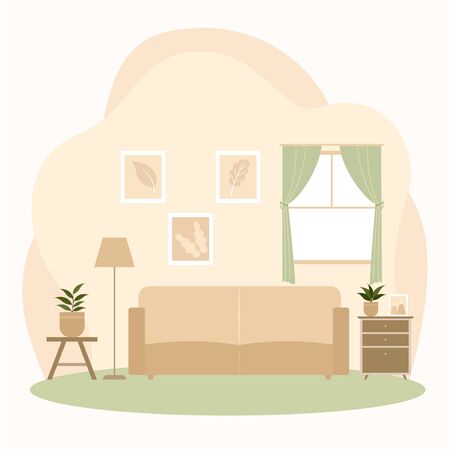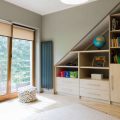Introduction to Jewel Tones in British Interiors
There’s something irresistibly luxurious about rich jewel tones, and their influence has been quietly yet confidently weaving through the fabric of British interiors. In recent years, UK homes have embraced these deep, opulent hues—think emerald greens, sapphire blues, ruby reds, and amethyst purples—not just as fleeting trends but as bold statements on accent walls. These colours evoke a sense of drama and sophistication that feels both modern and deeply rooted in Britain’s design heritage. From Victorian townhouses with ornate cornicing to contemporary city flats, jewel tones are being used to create striking backdrops that reflect evolving tastes while giving a respectful nod to the storied elegance of classic British décor. This vibrant palette celebrates the UK’s penchant for mixing tradition with innovation, making every home feel like a curated blend of past and present.
2. Understanding the Palette: Popular Jewel Tones for UK Homes
When it comes to creating a dramatic accent wall in a British home, selecting the right jewel tones is both an art and a science. The unique quality of natural light in the UK—often muted and softly diffused—means that rich, saturated colours take on an inviting, cosy depth rather than appearing overwhelming or brash. This makes jewel tones especially well-suited for accent walls in British interiors, where period architecture, ornate mouldings, and high ceilings can enhance their impact.
The Most Loved Jewel Tones in the UK
British homeowners have long gravitated towards certain jewel-inspired hues for their sophistication and timeless appeal. Here’s a look at some favourites:
| Jewel Tone | Colour Description | Why It Works in UK Homes |
|---|---|---|
| Emerald | Lush, deep green reminiscent of classic English gardens | Brings nature indoors and complements traditional wooden features |
| Sapphire | Rich blue with subtle grey undertones | Balances cool northern light, creating calm yet striking spaces |
| Amethyst | Purple with hints of blue or red | Adds regal elegance and warmth to Victorian or Edwardian settings |
| Garnet | Intense red with earthy depth | Pops beautifully against neutral trims and period details |
The Influence of British Light & Architecture
The interplay between jewel tones and Britain’s distinctive architectural features cannot be overstated. Tall sash windows, intricate cornices, and fireplaces provide a perfect backdrop for these opulent shades. The ever-changing daylight—sometimes moody, sometimes golden—brings out new nuances in these colours throughout the day. In particular, north-facing rooms benefit from the vibrancy of emerald or sapphire, while south-facing rooms glow with amethyst or garnet as the sun moves through the sky.
Practical Tips for Choosing Your Hue
When selecting your accent wall colour, consider both the room’s orientation and its function. Living rooms often shine with a statement emerald or sapphire wall, while bedrooms feel cocooning and restful with amethyst. For hallways or studies, garnet adds a welcoming richness without overpowering smaller spaces. Remember to test swatches on your walls first—paint can appear dramatically different depending on light levels and existing décor.

3. Choosing the Right Wall for Maximum Drama
Selecting the perfect wall to showcase a rich jewel tone is crucial for achieving maximum drama in your UK home, whether you live in a period property, an Edwardian terrace, or a modern city flat. The right accent wall should not only highlight architectural features but also enhance how you experience each room in daily life.
Consider Natural Light and Room Orientation
Begin by observing how daylight moves through your space. North-facing rooms often feel cooler and can benefit from warm-toned jewels like garnet or amber, which add cosiness. South-facing rooms, bathed in natural light, can handle deeper sapphire or emerald without feeling gloomy. In windowless corridors or snug corners, rich tones work best on smaller walls so they don’t overpower the space.
Functionality Meets Style
Think about how you use the room. In lounges or sitting rooms with original fireplaces and picture rails, painting the chimney breast in a jewel tone draws attention to period details while anchoring the space visually. In open-plan kitchens common to London terraces, consider the wall behind shelving or cabinetry as your statement surface—it gives personality without clashing with practical zones.
Architectural Features: A British Quirk
UK homes are full of charming nooks—alcoves, bay windows, and even stairwells—that beg for a splash of colour. Highlighting these with a jewel tone creates depth and drama without overwhelming traditional proportions. In more contemporary flats, go bold on the largest uninterrupted wall, ideally one that’s visible as you enter the room, setting the mood instantly.
Ultimately, choosing the right wall is about balancing drama with harmony. Let your home’s unique layout guide you—accentuating its best features ensures your jewel-tone accent wall feels intentional, welcoming, and unmistakably yours.
4. Balancing Bold Walls with Classic British Décor
Rich jewel-toned accent walls make a striking statement, but the true artistry lies in blending these bold hues with classic British décor elements for a space that feels both dramatic and comfortably lived-in. The UK’s architectural heritage offers plenty of inspiration—think intricate mouldings, period fireplaces, and painted woodwork. Here’s how to achieve that harmonious balance:
Tips for Harmonising Colourful Accent Walls
- Highlight Architectural Details: Use lighter or contrasting shades on cornices, skirting boards, or picture rails to frame your jewel-toned wall. This not only grounds the colour but also pays homage to traditional British interiors.
- Feature Fireplaces: If you’re lucky enough to have a period fireplace—be it marble, cast iron, or tiled—let it stand out against your rich backdrop. Opt for muted metallics (like antique brass) on fire surrounds or accessories to echo the room’s opulence without clashing.
- Painted Woodwork: Traditional panelled doors or wainscoting can be painted in complementary tones for a layered effect. For example, deep sapphire walls paired with soft grey-blue panelling create instant depth while maintaining a refined atmosphere.
Classic British Elements & Their Pairings
| Element | Suggested Pairing | Effect Achieved |
|---|---|---|
| Mouldings & Cornices | Cream or warm white against emerald green walls | Crisp contrast, highlighting period features |
| Fireplace (marble or cast iron) | Sapphire blue background with brass accessories | Sophisticated focal point, timeless appeal |
| Painted Woodwork (panelling, skirting) | Pewter grey on panelwork with amethyst walls | Subtle layering, gentle transition between bold and neutral |
| Heritage Wallpaper Accents | Burgundy feature wall with William Morris pattern wallpaper | Eclectic charm, nod to British design history |
Lived-In Layers: The Finishing Touches
Add softness with well-loved leather armchairs, tartan throws, or velvet cushions in complementary tones. Don’t shy away from vintage rugs and polished wood floors—these bring warmth and a sense of story to spaces where vibrant walls might otherwise feel overwhelming. By celebrating both bold colour and cherished tradition, you’ll create a home that’s unmistakably British yet full of contemporary flair.
5. Accessorising with a Curated Touch
Bringing rich jewel tones into your accent walls is just the beginning—its how you accessorise the space that transforms it from striking to genuinely inviting. In the context of a British home, where intentionality and tidiness are prized, pairing bold colours with thoughtfully selected furnishings and storage is key.
Smart Storage Solutions for Visual Harmony
When working with deep emerald greens, sapphire blues, or amethyst purples, consider integrating built-in cabinetry or modular shelves in complementary or neutral shades. These not only keep clutter at bay but also act as a subtle frame for your dramatic wall, letting the colour sing without overwhelming the room. Opt for closed storage to maintain a clean aesthetic—think shaker-style cupboards or under-bench drawers that blend seamlessly into period or modern British interiors.
Statement Furniture: Balancing Boldness and Functionality
Select one or two pieces of statement furniture to echo or contrast the jewel-toned feature wall. A velvet Chesterfield sofa in peacock blue or an art deco-inspired armchair in garnet red can ground the space, providing both comfort and visual interest. Keep other elements more restrained—mid-century side tables in walnut or classic oak add warmth without competing with the wall’s drama.
Cosy Textiles for a Welcoming Finish
No British home is complete without layers of comforting textiles. Bring in plush throws, tufted cushions, and woollen rugs in muted greys, creams, or even soft blush to temper the intensity of your jewel tones. This approach not only adds tactile cosiness but also ensures the room feels balanced—luxurious yet liveable.
Curate with Intention
Above all, maintain a curated touch. Resist overcrowding; instead, let each piece breathe and contribute to a cohesive whole. By blending smart storage, well-chosen furniture, and inviting textiles, you create a tidy yet characterful environment that reflects both British sensibility and the rich allure of jewel tones.
6. Keeping it Practical: Maintenance and Longevity
When embracing the bold beauty of jewel-toned accent walls in your UK home, a little practical know-how goes a long way toward keeping them looking vibrant and fresh. The unpredictable British weather—with its damp spells and ever-present risk of muddy boots—can make maintenance a real consideration, especially if you have children or pets dashing about.
Choosing the Right Paint Finish
To ensure longevity and easy cleaning, opt for durable paint finishes like satin, eggshell, or washable matt. These finishes resist scuffs and stains better than traditional matt paints, making them ideal for high-traffic areas such as hallways, kitchens, or living rooms. Satin finishes in particular offer a subtle sheen that enhances the depth of rich hues like emerald or sapphire while being remarkably easy to wipe down.
Simple Cleaning Strategies
Dust and marks are more noticeable on dark, saturated colours, but a regular wipe with a soft, slightly damp cloth can keep your accent wall looking immaculate. For stubborn fingerprints or smudges (inevitable with family life), use a mild soap solution and avoid abrasive sponges that could dull the finish. In especially busy spaces, consider a quick touch-up kit with leftover paint for small repairs—just in case a rogue football leaves its mark.
Protecting Colour Vibrancy Over Time
Jewel tones are designed to dazzle, so protect them from fading by positioning furniture to minimise direct sunlight on the wall. If possible, choose paints with UV-resistant pigments. During damp seasons, ensure your room is well ventilated to prevent moisture build-up that could cause paint to peel or discolour. A dehumidifier can be a wise investment in older properties where condensation is common.
By pairing practical paint choices with simple care routines, even the most dramatic jewel-toned accent wall can stay as stunning as the day it was painted—regardless of wild weather or the chaos of daily life. With these tips, your statement wall will continue to infuse your home with richness and character for years to come.


